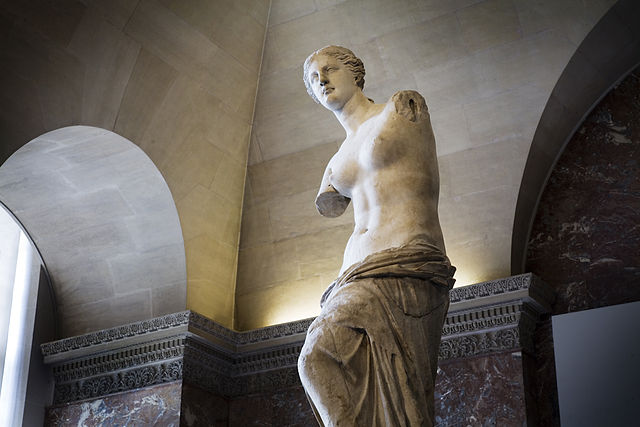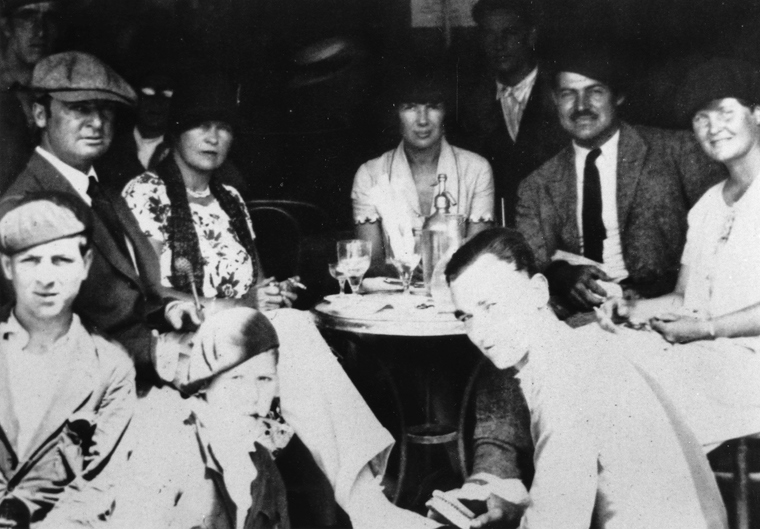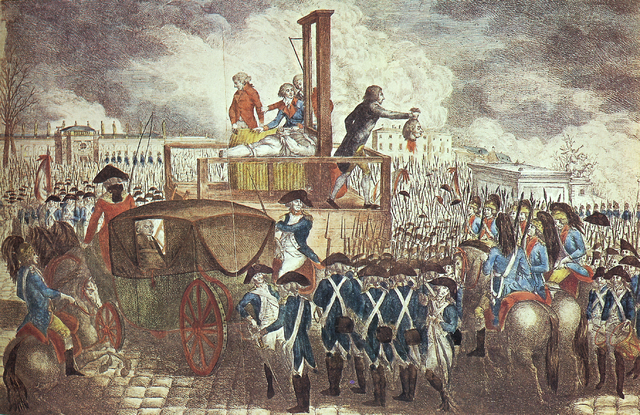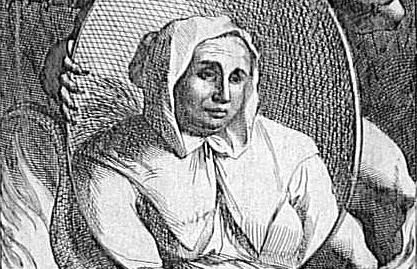 Weird Stuff
Weird Stuff  Weird Stuff
Weird Stuff  Miscellaneous
Miscellaneous 10 Famous People You Didn’t Know Killed Someone
 Crime
Crime !0 American Politicians Who Have Served Time in Prison
 Books
Books 10 Stories Far Ahead of Their Time
 Politics
Politics 10 Surprising Expectations of U.S. Presidents after Leaving Office
 Humans
Humans Real-Life Marvels: 10 People with Incredible Abilities
 Movies and TV
Movies and TV 10 Actors Who Tried and Failed at Directing
 History
History 10 Stunning Events Caught on Film or Tape Before Cell Phones
 Crime
Crime 10 Forensic Methods Pioneered by Sherlock Holmes
 Miscellaneous
Miscellaneous 10 Things You Didn’t Know Had Dirty-Sounding Names
 Weird Stuff
Weird Stuff 10 Mind-Blowing Incidents and Strange Finds in the Drive-Thru
 Miscellaneous
Miscellaneous 10 Famous People You Didn’t Know Killed Someone
 Crime
Crime !0 American Politicians Who Have Served Time in Prison
Who's Behind Listverse?

Jamie Frater
Head Editor
Jamie founded Listverse due to an insatiable desire to share fascinating, obscure, and bizarre facts. He has been a guest speaker on numerous national radio and television stations and is a five time published author.
More About Us Books
Books 10 Stories Far Ahead of Their Time
 Politics
Politics 10 Surprising Expectations of U.S. Presidents after Leaving Office
 Humans
Humans Real-Life Marvels: 10 People with Incredible Abilities
 Movies and TV
Movies and TV 10 Actors Who Tried and Failed at Directing
 History
History 10 Stunning Events Caught on Film or Tape Before Cell Phones
 Crime
Crime 10 Forensic Methods Pioneered by Sherlock Holmes
 Miscellaneous
Miscellaneous 10 Things You Didn’t Know Had Dirty-Sounding Names
10 Unsettling Mysteries From Old Paris
When it comes to the world’s great cities, there are few as indelibly linked with the perfect, the ideal, the artistic, and the romantic as Paris. It’s the place of great art and artists, of fine food and finer wines. But there’s a darker side to Paris, which is also home to some very strange and unsettling old mysteries.
10Van Gogh’s Death

Vincent van Gogh was one of the greatest artists of all time, but he had just as many issues as he did gifts. In 1890, van Gogh was staying in the Parisian suburb of Auvers, where he would regularly go out into the surrounding wheat fields to paint. On July 27, he was found shot in the stomach. Due to van Gogh’s well-known mental problems, the death was immediately assumed to be suicide.
But according to Pulitzer Prize–winning historians Steven Naifeh and Gregory White Smith, that theory just doesn’t add up. No gun was ever found and no one seems to know where van Gogh would have even obtained a gun in the first place. Van Gogh left no suicide note and there are signs that he expected to be around for at least a while longer. Among other things, he had just ordered a new stock of paints and written a very optimistic letter to his brother. Naifeh and Smith also question why someone would attempt suicide by shooting themselves in the stomach and then stumbling back to town. If van Gogh had wanted to kill himself, why choose a method that would eventually take 29 hours to finish the job?
The authors also point out the weak sources for van Gogh’s suicidal tendencies. There was an artist named Emile Bernard, who had previously spread dramatic rumors about van Gogh’s famous ear episode. Then there was a 13-year-old girl named Adeline Ravoux, the daughter of the owner of the inn that van Gogh was staying at, who changed her story every time she told it. And then there was 17-year-old Paul Gachet Jr., who often shared tall tales about his “friendship” with van Gogh. He was also later found in possession of some paintings that had mysteriously disappeared from van Gogh’s studio after his death.
So what’s the alternative to the suicide theory? Rene Secretan, the spoiled 16-year-old son of a wealthy local family, was a Wild Bill Cody wannabe with an old gun to match his ambitions. A bully, he’d often picked on the weird painter after he arrived in Auvers. Naifeh and Smith even found overlooked testimony from a witness who had seen van Gogh before he was shot, not in the wheat fields, but on the road to the Secretan family home.
9The Venus De Milo

One of the most famous works of art in the world, the Venus de Milo was discovered in 1820 and now resides in the Louvre. Since we’ve never actually seen it with arms, it’s easy to forget that the Venus is actually a broken piece of art. And there’s a chance that those broken arms could give the statue a whole new meaning.
Recently, an Occidental College professor got together with a San Diego designer to scan the statue and create a 3-D image of it, allowing them to accurately determine the positioning of the missing arms. Their findings suggest that she might have originally been holding a distaff and thread, which could make the statue something of a lady of ill repute—in Greek art, the image of women spinning was often linked to prostitution.
It has also been theorized that the statue might have been holding a shield, a symbol of victory, or a baby, making her a symbol of motherhood. She might have been holding an apple, or a mirror, and she might have been wearing jewelry since there are holes in the statue that might have been attachment points. The possibilities are nearly endless.
Not only do we not know what she holding, we don’t even know who she’s supposed to be. The statue’s current name suggests the goddess of love, but it has also been suggested that she’s actually a sea goddess named Amphitrite, Artemis, or one of any number of nymphs.
8The Rosicrucian Scare Of 1623

The Ancient Mystical Order Of The Rosy Cross is one of those incredibly well-known secret societies that have always captured the public imagination. It’s rumored that their origins can be traced back to Ancient Egypt. While we’re not sure about that, we do know that, in 1623, some weird things started happening in Paris.
In that year, signs started appearing around the city, seemingly announcing the coming of the Rosicrucians. The signs read: “We, being deputies of the principle College of the Brothers of the Rose Cross, are making a visible and invisible stay in this city through the Grace of the Most High, towards whom turn the hearts of the Just. We show and teach without books or marks how to speak all languages of the countries where we wish to be, and to draw men from error and death.”
Stories quickly started circulating that there were 36 agents acting on behalf of this mysterious society, who had sworn a condemnation of Christianity in exchange for the ability to teleport, endless wealth, and the ability to blend in at any place at any time.
And that’s pretty much all we know. Rumors about the top-secret order had recently been floating around Germany, but nobody’s sure exactly what was going on in France. Some have suggested that the signs were put up by someone who had heard the German rumors and decided to use them to freak out his Parisian neighbors. At the time, the people of Paris were getting a little witch-crazy, and it’s likely that the signs only added fuel to the fire, making it a precarious time to be any kind of scientist. We still don’t know where the signs came from, but if their purpose was to terrify Paris, they worked.
7The Missing Tribute To John Paul Jones

John Paul Jones was a hero of the American Revolution and an absolute, unabashed ladies’ man, so there really was no better place for him than Paris. Shortly after arriving, he had practically every woman in town longing after him, writing him perfumed letters, and, in one case, painting his portrait.
The Comtesse de Lowendahl was a married woman, and as a married woman with honor, she didn’t see her association with Jones as a romantic one. Instead, she hoped to use their friendship to further her husband’s career. When Jones was getting ready to leave Paris, she presented him with a miniature portrait she had painted of him.
Jones took her offering as a romantic one and made it clear that the feeling was mutual, sending her a lock of his hair and a code they could use for their love letters. She was baffled, declining his affections in a hilariously awkward series of letters that briefly had both of them thinking that they were writing to the wrong person. To save face, Jones eventually started denying that he had mistaken the portrait for a romantic gesture at all.
And what happened to the portrait that caused all the problems? We’re not sure, but there are plenty of miniatures that could be the one. In 1973, the Smithsonian acquired one candidate, but there are plenty of other possibilities, some known only through photographs. It’s likely that we’ll never know for sure.
6Hemingway’s Stolen Works

Losing a few hours of work is horrifying, whether it’s your Great American Novel or a college thesis. But what happened to years of Ernest Hemingway’s work on a Paris train is the stuff of legend—and mystery.
In 1922, Hemingway’s first wife, Hadley, was living in Paris while Ernest traveled Europe as a reporter. When he met a publisher in Switzerland, he wrote and asked her to join him in Geneva with some of his unpublished manuscripts. So Hadley packed four years of Hemingway’s prose into her suitcase and boarded a train in Paris. Stashing the suitcase, which included all carbon copies of the works as well as the originals, in a luggage compartment, she went to get some water.
When she returned, the case was gone.
Even though she recruited help from those working on the train, they never found any trace of the case, and Hadley was forced to ride all the way to Geneva thinking about what she was going to tell her husband when she got there. None of the work was ever recovered and Hemingway’s autobiography makes clear the devastating effect the incident had on him and on their relationship.
At the time, he was making a decent living as a reporter, but he was nowhere near the literary giant he would become. It’s fascinating to think of the person who grabbed the case, only to be disappointed to find it was full of nothing more than the writings of an obscure American author.
5The Mummy’s Head And The Bloody Gourd

When Louis XVI was beheaded in 1793, witnesses weren’t just content to celebrate—or mourn—the death of a king. They wanted a souvenir, which mostly meant sopping up his blood with whatever cloth they had handy. Beloved or not, Louis was still the king, and the blood of a king was something special. (It was also potentially worth some decent money.)
According to a story that was passed down through one family, one of their ancestors, Maximilien Bourdaloue, managed to soak his handkerchief with the king’s blood. For preservation, he put it inside an ornately carved gourd, as you do. The gourd still exists, but exactly whose blood is preserved in it is up for considerable debate.
On one hand, you have a researcher from Barcelona’s Institut de Biologia Evolutiva, who has analyzed the blood in the gourd and DNA taken from the mummified head of another ill-fated member of Louis’s family, Henri IV. The embalming process destroyed a lot of the head’s DNA, but scientists were able to get six different alleles out of it. Five of those alleles, which are rare, match the blood sample.
That seems compelling, but other experts, like geneticists from Belgium’s Catholic University of Leuven, say it’s impossible to be sure with such a small sample for comparison. Even if the markers are incredibly rare, it could still be a coincidence. So the Belgians added another group into the equation: three living members of the royal House of Bourbon.
They didn’t match. But that’s not really telling us anything concrete either, since the three living Bourbons all trace their descent back to Philippe I, who was probably gay and likely not anyone’s father. So, after a great deal of research, we still really have no idea whose blood is smeared on the treasured family heirloom.
4Ivar Kreuger

Sweden’s Ivar Kreuger has been called the patron saint of sinners, a turn-of-the-century con man on a global scale. He built his empire on the back of one of the most unlikely items—the safety match—and today, he’d be worth billions.
It was only when Kreuger died that the full extent of his financial scheming became clear, leading to the fall of Sweden’s prime minister and a rise in the country’s suicide rates. His companies (some 400 of them) were deeper in debt than most countries were, causing thousands of investors to lose everything.
Safety matches are something we don’t think about twice today, but Kreuger knew that they were a solid investment that wouldn’t be going out of style anytime soon. So he started buying matchmaking factories, consolidating them, and establishing a system of monopolies-for-loans, apparently giving a much-needed boost to postwar European economies. In reality, he was simply building up a Ponzi scheme of massive proportions.
But robbing one country to pay another only lasted for so long, even when Sweden attempted to bail him out of trouble (mostly to prevent a huge economic crash). The popular ending to his tale is that he shot himself when the banks came knocking, but there’s enough of a shadow cast across the theory to be intriguing.
Kreuger’s brother was convinced that he had been murdered. There’s some evidence that seems to point to that likelihood, including the fact that no one ever found a spent cartridge. Forensic evidence seemed to indicate that the wound might have been caused by a sharp object instead of a gun, although Kreuger’s body was cremated before further investigations could be made. There was certainly no shortage of people who might want him dead, but no one has ever been tied to a possible murder with any certainty.
3The Fallout From The Trial Of The Marquise De Brinvilliers

With one sentence, Marie-Madeleine Marguerite d’Aubray, Marquise de Brinvilliers, cast the shadow of mystery and suspicion over all of Paris.
In 1659, the high-born young woman was married to the Marquis de Brinvilliers, a man who was her equal in rank but said to be as “unstable as sand.” Unsurprisingly, it wasn’t long before she took a lover, Gaudin de Sainte-Croix. Even though her parents tried appealing to her to break it off, she persisted with the affair and actually attempted to officially separate from her husband. This was seen as a huge faux pas, and her lover was quickly arrested on orders from the king. While he was in jail, he learned all he could from an Italian poisoner who shared his cell.
Once released, Marie de Brinvilliers studied along with him and took to visiting the residents of Parisian hospitals, dropping off pastries and sweets that patients would would mysteriously die after eating. Her father and two brothers also died, as did Gaudin de Sainte-Croix himself, possibly after one of his experiments went wrong.
After Gaudin died, investigators turned up evidence suggesting that Marie had killed her family in revenge for their refusal to support her separation from her husband. Put on trial for their murders, she maintained her innocence, insisting that Gaudin had killed her family and framed her for it. Eventually, she confessed to the poisonings under torture and was sentenced to be beheaded and burned at the stake.
Before she died, Marie declared: “Out of so many guilty people must I be the only one to be put to death? Half the people in town are involved in this sort of thing, and I could ruin them if I were to talk.”
Even though the court made further attempts at getting more information out of her, she never revealed any other names—presumably of those that availed themselves of the services of her and of Gaudin de Sainte-Croix. Her words shed some new light on deaths that had previously gone unsolved. As it is, we have only a tantalizing glimpse of just how many people in late-17th-century Paris died because of poison.
2The Affair Of The Poisons

A few years after the Marquise de Brinvilliers delivered her cryptic words, Paris was terrified by a supposed group of poisoners and alchemists. Among the most notorious was Catherine Monvoisin, known as “La Voisin,” whose arrest came in 1679 amid claims that she was following in the footsteps of her mother, who was also rumored to be a witch. Extremely unhappy in her marriage, she made no secret of the affairs that she carried on with known poisoners and alchemists—one of whom later turned against her.
La Voisin plied her trade out of the back garden of her house, on the north side of Paris. During her trial, she stated that girls who found themselves unexpectedly pregnant would go there to be “emptied.” In the 17th century, that was bad enough, but more problems came when she started naming other clients, like a maid to the king’s mistress.
Just how far into the good graces of the monarchy she was, we have no idea. While she would claim that her work was more along the lines of powders and lotions for skin care, she did say that she was well acquainted with a number of members of the royal court, who were looking for much, much more than just something to keep their skin in an acceptable condition. She refused to say who they were and what they were after, but she did mention that “Paris is full of this kind of thing, and there is an infinite number of people engaged in this evil trade.”
What that actually means, we don’t know. She was burned at the stake in 1680.
1Dinorah Galou

In the early 1920s, Frenchwoman Dinorah Galou was arrested for pickpocketing. She claimed that she needed the money to support her children, as her husband’s salary wasn’t enough. Police suspicions were first raised when they were introduced to her twins, who were quite obviously completely different ages. When they continued investigating the family, they discovered that kids came and went a lot, with four random children showing up in a space of two years. First, Dinorah claimed to have adopted the children, after having told her husband that they were hers from a previous relationship. (Meanwhile, doctors had confirmed that she’d never given birth.) Before they were married, she had also apparently told him that her grandfather was an Indian maharajah, who was going to come to the wedding with loads of gifts. Unfortunately, his yacht—and the presents—were intercepted by the British. Luckily, Dinorah had a backup maharajah, who was also going to come.
He was accosted by the British, too.
They married anyway, and apparently took care of somewhere around 20 children over the years. While in custody, Dinorah changed her story repeatedly, but seemed to come back to her need to produce a large family because of her noble Indian heritage.
Eventually, some of the children were traced to various farms or homes where they had been passed off as servants. Gradually, it began to unfold that she was arranging for the adoption of unwanted babies (all without the knowledge of her husband), but exactly what happened to all the children who passed through her hands and how many of those children there were, no one is sure. One of the newspapers recounts an episode in court where a young woman, who had grown up thinking that Galou was her real mother, was forced to confront the knowledge that she had no idea who she really was or where she had come from anymore.








